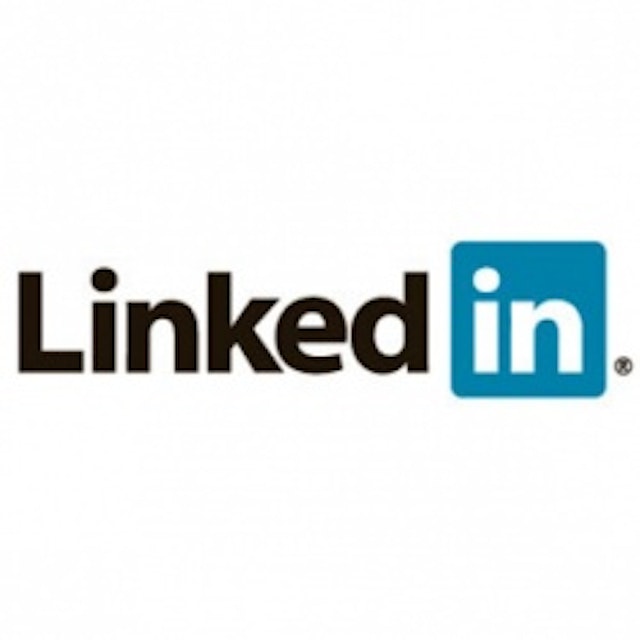In the past week, there have been at least three reported cases of people losing their jobs because of something said on social media, one of which happened before the person in question took the job.
This was, of course, before the death of Margaret Thatcher grabbed the headlines, which in itself has led to at least one suspension and one resignation, following ‘offensive’ comments.
In the wake of this, The Drum has decided to take a look at social media, and the role it plays both in the recruitment stages and while in a job.
Research from 2012 found that over a fifth (22 per cent) of HR directors check the social media profiles of candidates, while 32 per cent use profiles such as LinkedIn to communicate with candidates.
Farooq Mohammed, co-owner at Digital Gurus, recently told The Drum that LinkedIn was a key tool that recruiters used, and this week Facebook announced that it is set to create a free job posting gateway following a deal agreed between eQuest and Work4.
Why do recruiters check social media?
Colin Telford, managing partner at digital marketing recruitment agency The Candidate (pictured above), spoke to The Drum about why recruiters check social media: “Forget CV’s, social media and a candidate’s profile on the web is becoming one of the first things a company should look at. It’s only a matter of time until it’s widely accepted that your online social behaviour will be as critical as your experience in order to get you the job you want. “Employers are constantly looking for clues when hiring candidates, they want their investment to produce long term results, not nasty surprises further down the line. “More so than ever, employers are keen to avoid making mistakes at the point of recruitment. With training, inductions and settling in, bringing the wrong candidate on board can set a business back six to 12 months and that’s costly! “Whether making decisions based on social media is right or not remains to be seen. Some vocal users who do push the boundaries can often be the best candidates, it just depends on the role and client and whether they could possibly balance the perceived risk. “With social media now at everyone’s fingertips, people need to be more educated and aware of the serious impact of their thoughts, photos and activity on social media.”So what does this mean if, at some post in the past, you sent an ill-advised tweet or posted a picture on Facebook of a drunken night out? Are you doomed forever, unless you find an employer who doesn’t know or care about social media? Is our online reputation becoming more important than a CV?
Martin Woods, SEO Manager at search marketing agency Blueclaw (above), recently gave a talk at Leeds Metropolitan University about social media and how it can help and hinder employability.In researching this, he discovered that recruitment consultants and HR managers don’t focus just no a CV anymore: they will Google the candidates. This shouldn’t be surprising: for years candidates have been using search engines to find more about the companies they have been applying for – or at least, they should be.It was because of his talk at the university that Woods created a tool that
allows users to check their social profile using Excel and Google, allowing them to see what their online brand says about them, and discover if anything should be deleted: Facebook photos of that university pub crawl, maybe?Discussing the idea of researching candidates, Wood said: “I would do exactly the same thing when assessing a candidate. And you’d be amazed at some of the information and photos you find. And I’ll be honest; in many cases a social profile can be highly influential in the decision making process.“It’s a competitive job market out there at the moment and candidates need to market themselves more than ever before. As an employer I want to hire colleagues with passion, relevant skills and importantly someone who will ‘fit-in’ to our current team. “People hire people - let’s not forget that. Ensuring they see what you want them to see is vitally important to your prospects of securing a new role.”A recent report by Joseph Grenny found that
88 per cent agree people are ‘less polite’ on social media than they are in person: and if a potential employer is checking your account this means you could be giving a bad impression before they have ever met you. In order to lessen this chance, and make your profile as clean as a freshly-cleaned whistle, we asked LinkedIn and Facebook to provide their top five tips.
Five tips for managing your professional identity through LinkedIn
Your LinkedIn profile is a snapshot of your experience, interests, and who you are as a professional. It’s designed to attract the attention of important people who are searching for people like you online. These could be recruiters, networking contacts, potential customers or clients. A strong profile can help you put your best professional foot forward. Beyond simply being on LinkedIn and having an up-to-date profile, here are some simple tips for making sure your first impression counts next time someone Google’s your name.
1. Write your profile headlineYour profile headline gives people a short, memorable way to understand who you are in a professional context beyond your job title. Think of the headline as the slogan for your professional brand. Check out the profiles of your peers to get some ideas and inspiration. Just avoid calling yourself a guru.
2. Upload an professional photoProfiles with photos are seven times more likely to be viewed than those without. Choose a professional, high-quality headshot of you alone that will help people recognise you. Pictures of you doing tequila shots on bar, cartoon avatars, and cute pictures of your puppy are unlikely to give the right first impression.
3. Update your status regularlyWhat are you working on? What was the most interesting industry article you read today? Sharing information and updates with your network helps keep them up to date with what you’re doing, and can help grow your professional brand. Tell people about events you’re attending, major projects you’ve completed, or the best piece of professional advice you’ve heard recently, like these tips.
4. Share your workFor the creative industries especially, another way to enhance your LinkedIn profile is to add examples of your writing, designs, creative or other work by displaying URLs or adding SlideShare presentations to your profile. Direct people to your website, blog, or Twitter feed if this is where you share your best work. Pics or it didn’t happen.
5. Get endorsedLinkedIn Endorsements are a great one-click way for your connections to recognise you for specific skills. You can add specific skills to your own profile and endorse your connections. Very soon you’ll have a crowd-sourced summary of what you’re known for.
Five tips for managing your personal identity through Facebook
While a LinkedIn profile allows you to discuss your professional aspects, even someone with a glowing LinkedIn page can make comments they regret on Facebook, especially since mobile internet was invented. Here’s how to make sure your page is protected, and that those fancy dress photos aren’t the first thing that comes up when someone searches your name.
1. Use the ‘View as’ button on your Timeline to see what your profile looks like to different peopleThis will allow you to see precisely how your profile is viewed by every one of your friends and anyone on Facebook.Using this function enables you to ensure that they are in control of who can view what content on their profile.
2. Use the ‘activity log’ button on your Timeline to curate different profiles for different audiencesThe activity log enables you to choose which of your activity can be viewed and by whom.
3. Turn on ‘pending posts’ to review posts from friends before they appear on your profileYou can now turn on the ability to review photos or posts you are tagged in before they appear on your profile. This is another way in which you can ensure that you have as much control over what is added to your profile as possible.
4. Share different things with different audiences using friend listsYou can use friend lists to sort friends into different groups – then use the drop down button as you post to choose which lists you share content with. This function can be found on the left hand side of your home page – you can use it to quickly create lists of colleagues, close friends or acquaintances.
5. Know where to find support with Facebook’s Safety CentreFamiliarise yourself with where you can find help on Facebook.
Having make sure your social media profile is squeaky clean if recruiters check it out, why not take a look at The Drum's job section?




